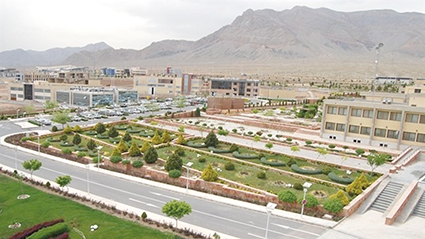Armenia & South Caucasus Economic Corridors: The Case of the Meghri FEZ
In late 2017, Armenia opened a free economic zone (FEZ) in Meghri, south of the country, aimed at reviving the economic prospects with Iran. Given its geographical position, commercial and logistical capabilities, as well as Armenia’s multi-sector preferential trade regimes, the free zone could become a bridge between Iran, the Eurasian Economic Union and the European Union.
According to the government, approximately 50-70 operators will be involved in the Meghri FEZ over the next several years, with a projected investment of $100-130 million. It was also announced that the FEZ will create 1,500 new jobs and the annual turnover will reach $250 in exported goods and services. Moreover, entrepreneurs at Meghri will not pay taxes, except for the ones on their net income.
The opening follows a positive trend in the bilateral relations between Iran and Armenia. Trade between Armenia and Iran in 2017 grew to more than $220 million (up from 2016 - $199.4 million). The same year, exports to Iran from Armenia stood at $66.9 million (up from the previous year). Exports to Armenia from Iran also increased and stood at $144.4 million.
The Meghri FEZ will be developed in two stages. During the first stage, basic infrastructure for the launch of the FEZ will be prepared. The second phase involves the expansion of FEZ operations with additional infrastructure on approximately 70 hectares of land in order to provide a business-friendly environment.
Geopolitical Context
A look at the map shows that Armenia is a landlocked country, its position aggravated by the fact borders with Azerbaijan and Turkey are closed. All the important regional energy and railroad projects circumvent Armenia and, quite logically, Yerevan wants to break this isolation. From a geopolitical point of view, the Meghri FEZ actually falls within those broader initiatives on behalf of Yerevan which aim at fostering regional cooperation.
Indeed, there are positive trends which could help the Meghri FEZ: Iran has always expressed interest in expanding trade links to Russia and the wider Eurasian Economic Union (EEU). And it falls into Iran’s strategy of increasing its influence in the South Caucasus.
There have been some successes on the Iranian side and Meghri is one of them. However, overall, there are significant constraints which Iran will continue facing in the South Caucasus. Russia and Turkey are well represented both militarily and economically in the region. Russia might have not been against Meghri, but the Russians would continue obstructing any Iranian moves towards establishing independent/new pipelines or railways to Armenia and Georgia. As a reflection of this, when there were talks several years ago on building a large-scale transit gas pipeline from Iran through Armenian territory to Georgia, Moscow was quick to block the move on behalf of the Armenian government. The Kremlin even bought the majority of shares in the existing Armenia-Iran transit pipeline to effectively forestall any further initiatives on that front.
Tehran and Yerevan also held talks on the construction of a $3.7bln railway to run through Armenia to Georgia’s Black Sea coast. However here too the project stalled as difficulties in securing financing arose. The reality is that Russia owns most of Armenia’s railway infrastructure and as a result can block any pro-Iranian initiative. Another factor is that neighboring Azerbaijan already has the necessary pipeline infrastructure and the Baku-Tbilisi-Kars railway, launched last October, will only strengthen Iran’s willingness to take the Azerbaijan route.
Back to the Meghri FEZ
Despite Meghri FEZ’s ambitious projections, there are constraints too. For example, Armenia’s other two economic zones, the Meridian and Alliance FEZs in Yerevan, established in 2014, have between them created just 94 jobs and garnered interest from 17 companies.
Meghri FEZ’s fortunes also depend on the increasing Baku-Teheran cooperation. For Yerevan, this is an unfortunate development as Iran will now be more willing to cooperate with Azerbaijan because of the latter’s already existent infrastructure.
In January 2017, Tehran was recipient of a $500 million loan from Baku to construct a 205-kilometer railway which would connect Azerbaijani and Iranian railways (the Rasht-Astara line). According to the deal, Azerbaijan will rent the railway line for 15 years; the terminals for 25 years. Both countries claim that bilateral trade will increase to 5 million tons per year. This will further limit any effective corridors from Iran to the Black Sea through the Armenian territory.
Thus, while the opening of the Meghri FEZ is an important development and is a part of Armenia’s geopolitical project for breaking out of isolation, there are still numerous developments that point to troubles ahead for the project. Among them, Russia’s dominating aims and Azerbaijani-Iranian close cooperation.
By Emil Avdaliani











